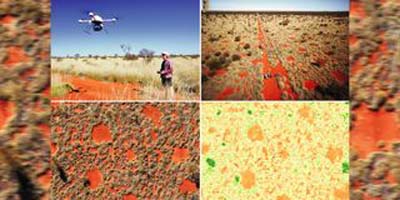
Methane muted: How did early Earth stay warm?
Covert Report
Islamabad: Humans worry about greenhouse gases, but between 1.8 billion and 800 million years ago, microscopic ocean dwellers really needed them.
The sun was 10 to 15 percent dimmer than it is today – too weak to warm the planet on its own. Earth required a potent mix of heat-trapping gases to keep the oceans liquid and livable.
For decades, atmospheric scientists cast methane in the leading role. The thinking was that methane, with 34 times the heat-trapping capacity of carbon dioxide, could have reigned supreme for most of the first 3.5 billion years of Earth history, when oxygen was absent initially and little more than a whiff later on. Nowadays oxygen is one-fifth of the air we breathe, and it destroys methane in a matter of years.
“A proper accounting of biogeochemical cycles in the oceans reveals that methane has a much more powerful foe than oxygen,” said Stephanie Olson, a graduate student at the University of California, Riverside, a member of the Alternative Earths team and lead author of the new study published September 26 in the Proceedings of the National Academy of Sciences. “You can’t get significant methane out of the ocean once there is sulfate.”
Sulfate wasn’t a factor until oxygen appeared in the atmosphere and triggered oxidative weathering of rocks on land. The breakdown of minerals such as pyrite produces sulfate, which then flows down rivers to the oceans. Less oxygen means less sulfate, but even 1 percent of the modern abundance is sufficient to kill methane, Olson said.
Olson and her Alternative Earths coauthors, Chris Reinhard, an assistant professor of earth and atmospheric sciences at Georgia Tech University, and Timothy Lyons, a distinguished professor of biogeochemistry at UC Riverside, assert that during the billion years they assessed, sulfate in the ocean limited atmospheric methane to only 1 to 10 parts per million — a tiny fraction of the copious 300 parts per million touted by some previous models.
The fatal flaw of those past climate models and their predictions for atmospheric composition, Olson said, is that they ignore what happens in the oceans, where most methane originates as specialized bacteria decompose organic matter.
Seawater sulfate is a problem for methane in two ways: Sulfate destroys methane directly, which limits how much of the gas can escape the oceans and accumulate in the atmosphere. Sulfate also limits the production of methane. Life can extract more energy by reducing sulfate than it can by making methane, so sulfate consumption dominates over methane production in nearly all marine environments.
The numerical model used in this study calculated sulfate reduction, methane production, and a broad array of other biogeochemical cycles in the ocean for the billion years between 1.8 billion and 800 million years ago. This model, which divides the ocean into nearly 15,000 three-dimensional regions and calculates the cycles for each region, is by far the highest resolution model ever applied to the ancient Earth. By comparison, other biogeochemical models divide the entire ocean into a two-dimensional grid of no more than five regions.
“There really aren’t any comparable models,” says Reinhard, who was lead author on a related paper in Proceedings of the National Academy of Sciences that described the fate of oxygen during the same model runs that revealed sulfate’s deadly relationship with methane.
Reinhard notes that oxygen dealt methane an additional blow, based on independent evidence published recently by the Alternative Earths team in the journals Science and Geology. These papers describe geochemical signatures in the rock record that track extremely low oxygen levels in the atmosphere, perhaps much less than 1 percent of modern values, up until about 800 million years ago, when they spiked dramatically.
Less oxygen seems like a good thing for methane, since they are incompatible gases, but with oxygen at such extremely low levels, another problem arises.
“Free oxygen [O2] in the atmosphere is required to form a protective layer of ozone [O3], which can shield methane from photochemical destruction,” Reinhard said. When the researchers ran their model with the lower oxygen estimates, the ozone shield never formed, leaving the modest puffs of methane that escaped the oceans at the mercy of destructive photochemistry.
With methane demoted, scientists face a serious new challenge to determine the greenhouse cocktail that explains our planet’s climate and life story, including a billion years devoid of glaciers, Lyons said. Knowing the right combination other warming agents, such as water vapor, nitrous oxide, and carbon dioxide, will also help us assess habitability of the hundreds of billions of other Earth-like planets estimated to reside in our galaxy.
“If we detect methane on an exoplanet, it is one of our best candidates as a biosignature, and methane dominates many conversations in the search for life on Mars,” Lyons said. “Yet methane almost certainly would not have been detected by an alien civilization looking at our planet a billion years ago — despite the likelihood of its biological production over most of Earth history.”
